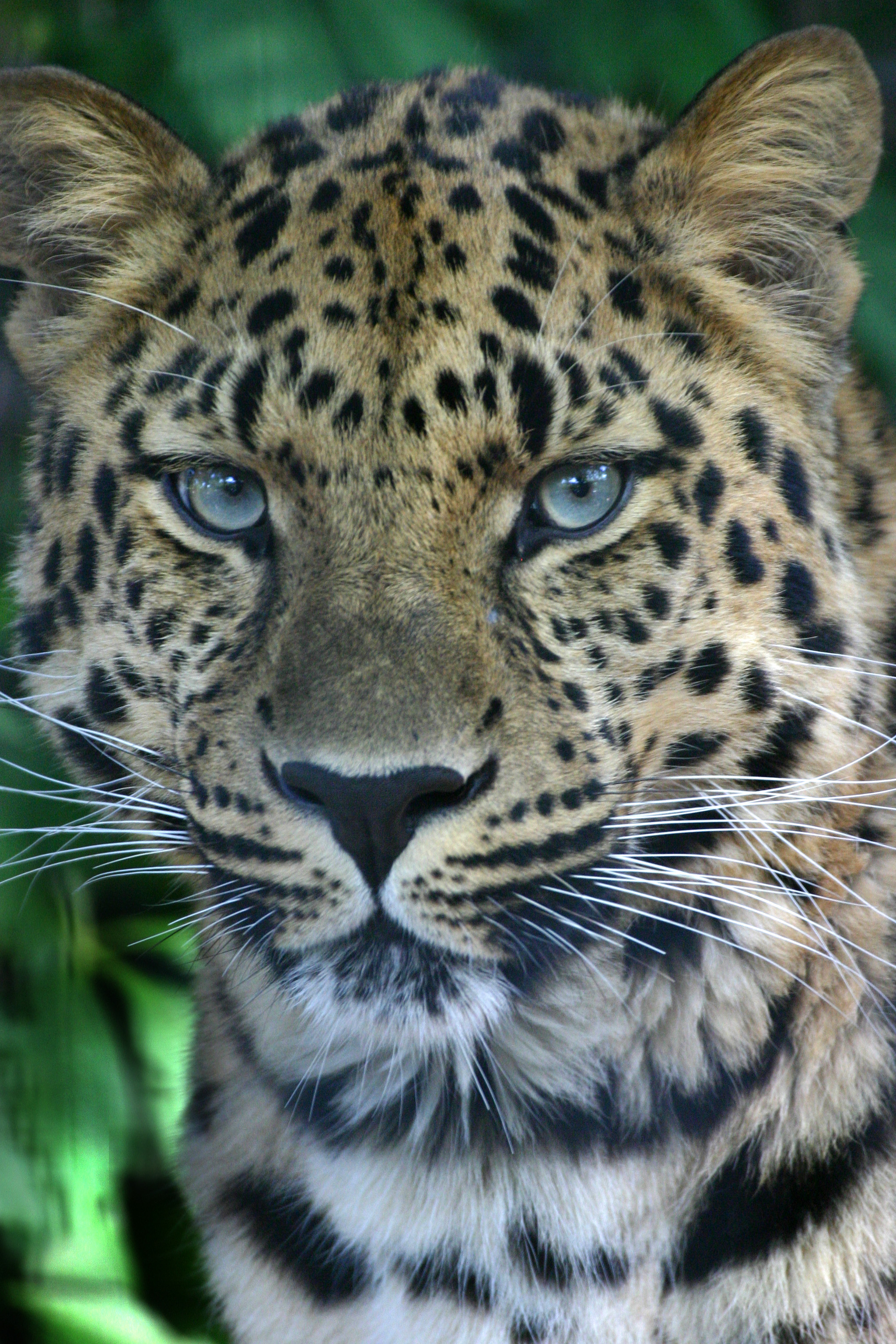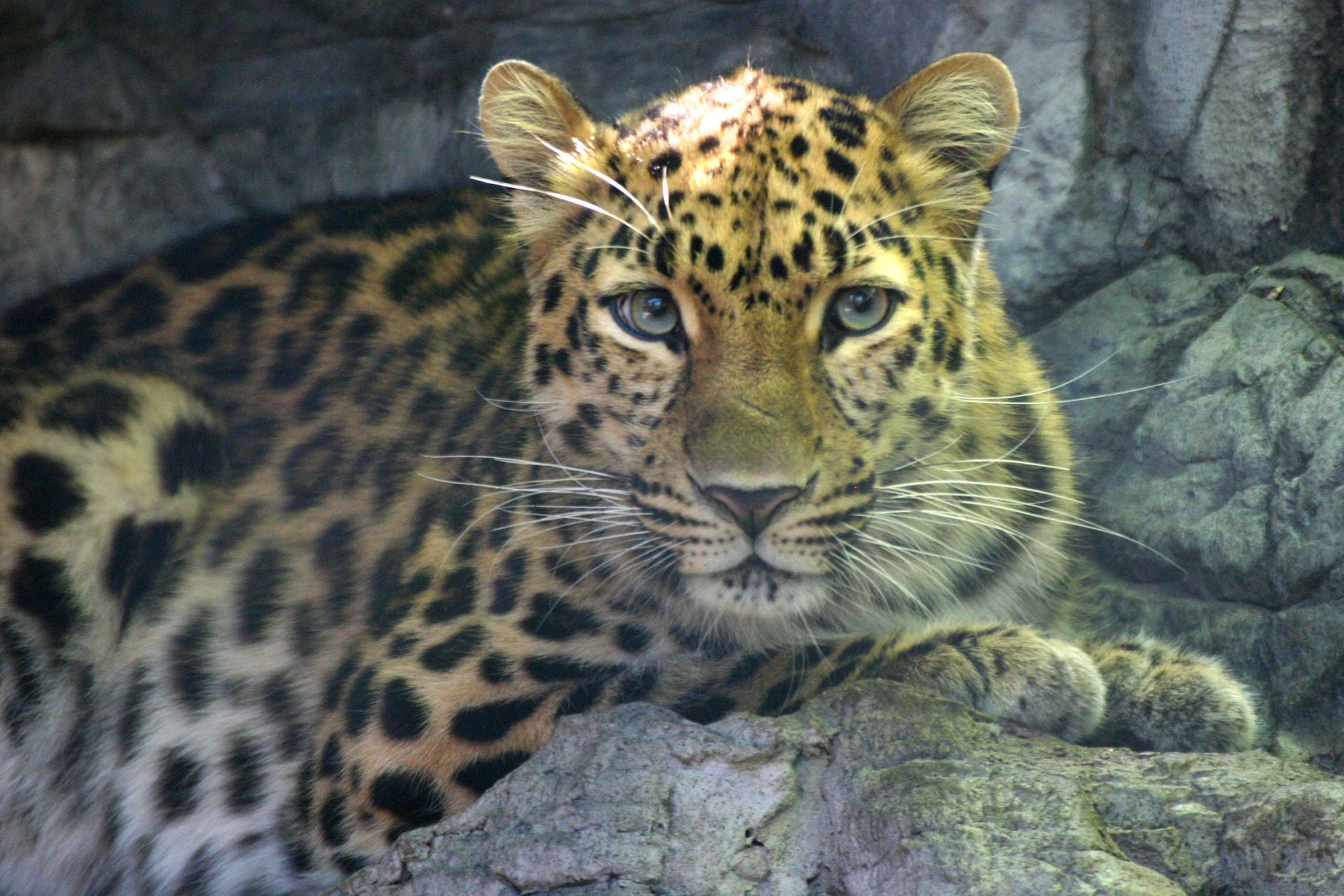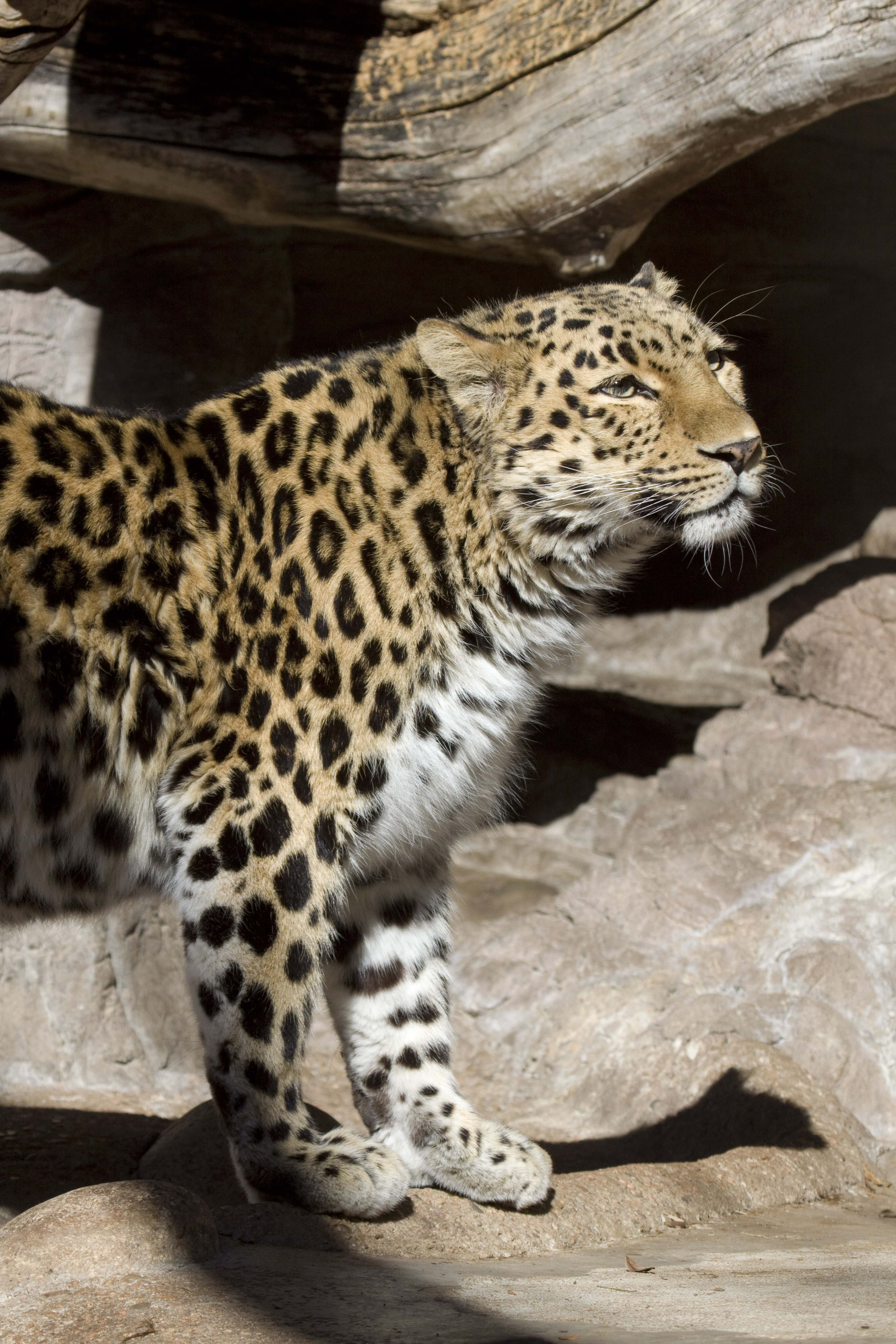 The numbers for all large cats have dropped significantly in the last century and the Amur leopard is among the closest to extinction.
The numbers for all large cats have dropped significantly in the last century and the Amur leopard is among the closest to extinction.
There are differing reports as to just how many of them remain in the wild. As of 2014, there were less than 50, according to the most optimistic estimation, and another 96 are located in North American zoos. The International Union for Conservation has them listed as “critically endangered.”
The Denver Zoo Conservation Alliance is a sanctuary for two Amur leopards. Dazma and Hari Kari have been at the zoo for more than a decade They are 16 and 13 years old respectively—geriatrics in feline years, but you wouldn’t know it by their looks.
“They are both beautiful animals,” says Janée Zakoren, carnivore keeper at the zoo. “Hari, for example, has these intense, almost glass-like eyes and big, powerful paws. They’re both just so cool.”
Most people will never see an Amur leopard in their lifetime, much less up close. At Denver Zoo, visitors have the unique experience of coming face to face with these elegant creatures, protected only by thick and sturdy glass.
“The exhibit is designed so you can interact with them in a way that most people never will,” Zakoren says.
Even if you were to visit the leopards’ native habitat--the Amur region located along the Chinese-Russian border--your chances of spotting one are slim. Aside from the low numbers, the cats are also highly elusive, keeping mostly to themselves and taking advantage of a dense, pale coat to blend in with the environment.
Though Dazma and Hari have shared close quarters for years, this isn’t exactly a love story. True to their nature, Dazma and Hari are loners, and have mainly only come together to mate. In 2012, Dazma gave birth to Makar. Two years later, came another cub, Sochi.
The births were part of the zoo’s participation in the Association of Zoos & Aquariums’ Species Survival Plan (SSP), a program set up in 1981 to help endangered animals. Two offspring may seem like an insignificant number, but it’s a huge feat when you consider the odds: of the limited number of Amur leopards in North American zoos, about half are suitable for breeding. Of those, about 30 percent are past their prime reproductive years. About 10 percent of the ones that are of breeding age have been hand-reared, which negatively affects breeding potential. The remaining animals are too young, have health issues or are at non-AZA facilities that do not participate in the SSP program.
“So the fact that Denver Zoo has recently contributed two parent-raised, genetically valuable individuals to the breeding population is quite significant,” explains Zakoren.
 Dazma and Hari resemble house cats in many ways: they live and play on their own terms, keep to themselves, like to scratch at things, and share the grace and steeliness of their domesticated counterparts.
Dazma and Hari resemble house cats in many ways: they live and play on their own terms, keep to themselves, like to scratch at things, and share the grace and steeliness of their domesticated counterparts.
“They definitely have catitude,” the zookeeper says.
 In other ways, they are worlds apart—powerful carnivores that can reach speeds of 35 mph and jump more than 19 feet when chasing prey. Then of course there’s the question of size. Amur leopards are about 20 times bigger than your average pet cat. Dazma and Hari run on the bigger end of the scale. The lady leopard weighs 83 pounds and her male counterpart is around 132 pounds. To tell them apart, keep an eye out for Dazma’s slight pouch.
In other ways, they are worlds apart—powerful carnivores that can reach speeds of 35 mph and jump more than 19 feet when chasing prey. Then of course there’s the question of size. Amur leopards are about 20 times bigger than your average pet cat. Dazma and Hari run on the bigger end of the scale. The lady leopard weighs 83 pounds and her male counterpart is around 132 pounds. To tell them apart, keep an eye out for Dazma’s slight pouch.
“I call it the mom bod,” says Zakoren, with a laugh. Another sign? Hari is usually perched up high, while Dazma prefers to stay close to the ground. “The men are used to taking prey into the trees,” she explains.
At the zoo, you’ll learn about the species’ life and plight, and how we can help preserve them. As is often the case in the modern world, man is the cats’ biggest threat. Poaching, deforestation and global warming are among the prime factors affecting Amur leopards.
“There are a few simple things we can do, even from Denver, to help,” says Zakoren. “Simple things like turning our thermostat a few degrees up in summer and down in winter, and making sure our wood furniture is sourced in sustainable ways, can help ensure future generations.”
Fun Cat Fact!
Did you know there is no such thing as a black panther? The dark-coated animals you see are varying species of cats carrying the recessive melanistic gene (the opposite of albinism). Underneath the fur, you’d still see spots on their skin.
Photos courtesy of Denver Zoo.


